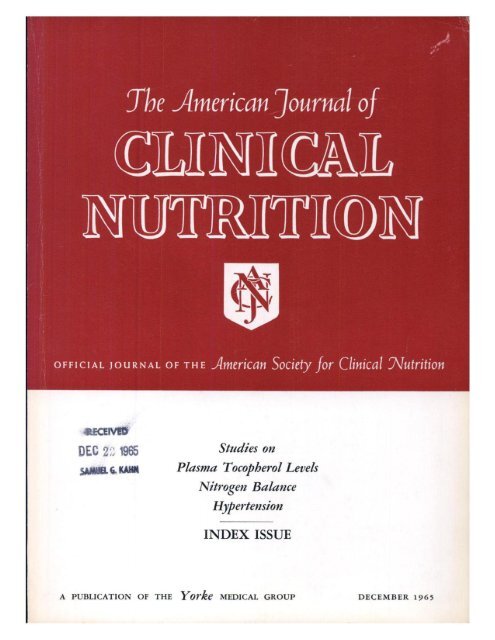仅靠校本营养教育计划预防儿童肥胖并不划算:一项微观模拟研究。
IF 6.5
1区 医学
Q1 NUTRITION & DIETETICS
引用次数: 0
摘要
背景:尽管改变儿童营养政策、系统和环境(PSE)的干预措施在预防儿童肥胖症方面通常具有成本效益,但现有证据表明,营养教育课程在没有伴随 PSE 改变的情况下更常被实施:估算美国公立学校为预防儿童肥胖而经常实施的三种营养教育课程的社会成本和潜在成本效益:2021 年,我们在 SNAP-Ed 工具包中搜索了营养教育课程,该工具包是联邦政府协调的肥胖预防干预措施目录。标准成本计算方法估算了 2023-2032 年在全国范围内实施每种已确定课程的社会成本。儿童肥胖症干预成本效益研究(CHOICES)的微观模拟模型可预测儿童肥胖症预防干预的成本、节省的医疗成本和预防的肥胖症病例,我们利用该模型对每种课程进行了阈值分析,估算了对儿童体重指数(BMI)的一系列假设影响下每质量调整生命年(QALY)的成本,以确定每种课程需要产生多大的影响才能达到每质量调整生命年 150,000 美元的成本效益阈值:结果:从 SNAP-Ed 中确定了三种不含 PSE 的营养教育课程;没有证据表明它们对肥胖风险有影响。从 2023 年到 2032 年,这些课程在全国范围内的估计实施成本从 18 亿美元(95% UI:17.9-18.2 亿美元)到 34.8 亿美元(95% UI:34.4-35.1 亿美元)不等。每个课程必须使儿童平均体重指数(BMI)降低 0.10 kg/m2 或更多--这三个课程或更全面的现有预防计划均未报告过这一效应规模,因此在这一临界值上被认为是具有成本效益的:结论:SNAP-Ed 认可的营养教育课程本身不太可能对预防儿童肥胖具有成本效益。需要继续努力实施有确凿证据证明有效的干预措施,包括 PSE 方法。本文章由计算机程序翻译,如有差异,请以英文原文为准。
School-based nutrition education programs alone are not cost effective for preventing childhood obesity: a microsimulation study
Background
Although interventions to change nutrition policies, systems, and environments (PSE) for children are generally cost effective for preventing childhood obesity, existing evidence suggests that nutrition education curricula, without accompanying PSE changes, are more commonly implemented.
Objectives
This study aimed to estimate the societal costs and potential for cost-effectiveness of 3 nutrition education curricula frequently implemented in United States public schools for childhood obesity prevention.
Methods
In 2021, we searched for nutrition education curricula in the Supplemental Nutrition Assistance Program (SNAP)-Ed Toolkit, a catalog of interventions for obesity prevention coordinated by the federal government. Standard costing methodologies estimated the societal costs from 2023 to 2032 of nationwide implementation of each identified curriculum. Using the Childhood Obesity Intervention Cost-Effectiveness Study (CHOICES) microsimulation model, which projects the costs, health care costs saved, and cases of obesity prevented for childhood obesity prevention interventions, we conducted threshold analyses for each curriculum, estimating the cost per quality-adjusted life-year for a range of hypothetical effects on child BMI to determine how large of an effect each curriculum would need to have to meet a cost-effectiveness threshold of $150,000 per quality-adjusted life-year.
Results
Three nutrition education curricula without PSE were identified from SNAP-Ed; none had evidence of an impact on obesity risk. From 2023 to 2032, the estimated implementation costs of the curricula nationwide ranged from $1.80 billion (95% upper interval: $1.79, $1.82 billion) to $3.48 billion (95% upper interval: $3.44, $3.51 billion). Each curriculum would have to reduce average child BMI by 0.10 kg/m2 or more—an effect size that has not been reported by any of the 3 curricula, or by more comprehensive existing prevention programs—to be considered cost effective at this threshold.
Conclusions
SNAP-Ed–endorsed nutrition education curricula alone are unlikely to be cost effective for preventing childhood obesity. Continued efforts to implement interventions with strong evidence for effectiveness, including PSE approaches, are needed.
求助全文
通过发布文献求助,成功后即可免费获取论文全文。
去求助
来源期刊
CiteScore
12.40
自引率
4.20%
发文量
332
审稿时长
38 days
期刊介绍:
American Journal of Clinical Nutrition is recognized as the most highly rated peer-reviewed, primary research journal in nutrition and dietetics.It focuses on publishing the latest research on various topics in nutrition, including but not limited to obesity, vitamins and minerals, nutrition and disease, and energy metabolism.
Purpose:
The purpose of AJCN is to:
Publish original research studies relevant to human and clinical nutrition.
Consider well-controlled clinical studies describing scientific mechanisms, efficacy, and safety of dietary interventions in the context of disease prevention or health benefits.
Encourage public health and epidemiologic studies relevant to human nutrition.
Promote innovative investigations of nutritional questions employing epigenetic, genomic, proteomic, and metabolomic approaches.
Include solicited editorials, book reviews, solicited or unsolicited review articles, invited controversy position papers, and letters to the Editor related to prior AJCN articles.
Peer Review Process:
All submitted material with scientific content undergoes peer review by the Editors or their designees before acceptance for publication.

 求助内容:
求助内容: 应助结果提醒方式:
应助结果提醒方式:


